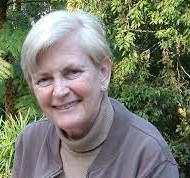
October 1, 2021
Plant Breeders to the Rescue
The first record of an Australian plant was made by Spanish explorers in the Torres Strait in 1606. More famously, and more than a century later, Joseph Banks and Daniel Solander collected 132 specimens of Australian plants at Botany Bay and added many others as the Endeavour sailed along the Australian coast. Subsequently, Banks advised on the choice of plants and seeds to be taken by the First Fleet to the new settlement. Thus began the purposeful introduction of foreign plants into Australia.
It wasn’t until the latter part of the twentieth century that we began to appreciate the threats posed to our unique flora and natural biodiversity by the uncontrolled introduction and cultivation of ornamental plants with weed potential. Bush regeneration teams began to work in areas that were lightly weed infested, thus allowing the bush to reclaim its territory. Gardeners gradually became more conscious of the problems they could cause by growing and dumping weedy plants. Government and private bodies worked to earmark weeds and to set up weed control bodies. A 2005 report, Jumping the Garden Fence, produced by CSIRO for the World Wildlife Fund, expressed concern about the number of invasive garden plants that were still available for sale to Australian gardeners.
The modern Australian nursery industry is committed to stemming the spread of weeds from Australian gardens. In the early twenty-first century the nursery association of NSW and the ACT introduced a program called Grow Me Instead to help gardeners recognise common invasive plants and instead plant garden-worthy replacements. Grow Me Instead has since spread to nursery associations around Australia.
Plant breeders are playing their part by working to develop plant varieties that are unlikely to create weed problems. Todd Layt from Ozbreed explains:
“Great exotic species can be improved through breeding, and their invasive qualities either reduced or eliminated. Many exotics have been selected by seed growers for prolific seed set. We do the opposite by looking for low to no seed set in our trials.’’
Todd Layt, Ozbreed
As an example, Todd has bred Gazania Double Gold™. The popular, hardy and cheerful South African gazanias have a dark side because they develop copious seeds that invade natural areas in warm climates with well-drained soils (i.e., much of Australia). By selecting gazania cultivars, such as Double Gold, that have almost no reproductive capability, gardeners and landscapers can go back to enjoying these colourful daisies. Other safer gazania varieties to look for are Montezuma, Sunset Jane, Sahara, Dynamo and Zanya.

Rhaphiolepis, commonly called Indian hawthorns, are popular and hardy evergreen shrubs that, due to their unwelcome fecundity, appear on many weeds lists. The seed-filled berries on the species are attractive to birds that unwittingly act as super spreaders. Ozbreed has developed two Rhaphiolepis cultivars, R. Çosmic White and R. Cosmic Pink, first bred by Vic Ciccolella, to avoid this problem. Both varieties have an extremely low seed set but still boast a showy floral display.
John Robb, plant breeder at Paradise Plants in Kulnura NSW, has bred two of the most popular Rhaphiolepis cultivars — Oriental Pearl and Oriental Pink. As John says:
“Recent breeding has seen the development of new selections of R. indica, which have a very low seed set and very low fertility. In trials at Paradise Nurseries we have found there is massive variation in the quantity of seed produced by different Rhaphiolepis varieties when grown under the same conditions. For example, in our 2015 trial, the straight species produced an average of 1982 seeds per plant, while R. ‘Oriental Pearl’ produced no seed.”
John Robb, Paradise Plants

John is also breeding new butterfly bushes (Buddleia spp.) with low sterility, such as the fragrant B. Spring Promise. Many other less invasive versions of plants renowned for their weed potential are now available. For example, safer varieties of agapanthus (look for Queen Mum, Snowball and others), African iris (Dietes spp.) and fountain grass (Pennisetum alopecuroides) are readily found in nurseries.
The gardening responsibly movement helps growers, retailers and gardeners identify ornamental plants that won’t cause harm to our unique Australian environment. And home gardeners can take heart that new breeding is allowing them to grow some formerly maligned plants without threatening our precious natural biodiversity.

Judy Horton
Editor, freelance writer, radio horticultural adviser
Judy Horton is a horticulturist who in 2015 retired after working for 22 years for Yates where she was responsible for updating six editions of Yates Garden Guide, the best-selling Australian gardening book.
Judy is one of the weekend regulars who answers garden questions on ABC 702 “Weekends with Simon Marnie” program. In 2009 Judy was awarded a Hall of Fame Gold Laurel by the Horticultural Media Association of Australia for her outstanding contribution to the promotion of gardening. She has also been presented with the Golden Wattle Award, the Australian Institute of Horticulture’s highest accolade, for her assistance to the industry.
In the Australia Day Honours list in 2018 Judy was awarded an Order of Australia Medal (OAM) for her contribution to the promotion of gardening.
Since her retirement, Judy has taken on the role of editor of Our Gardens, the Garden Clubs of Australia quarterly magazine. She also travels as a botanical guide for Botanica World Discoveries and is a popular guest speaker.
